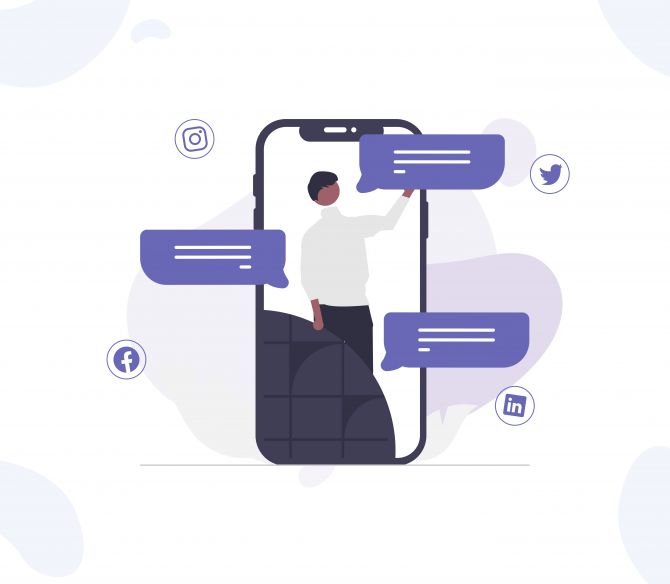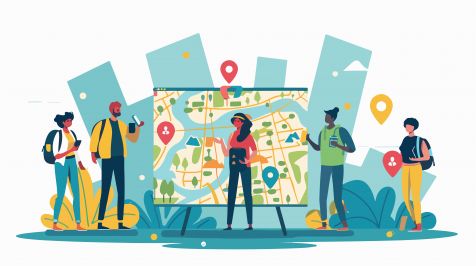
What Is Personalized Marketing and Why Is It Important?
Personalized marketing, sometimes referred to as one-on-one marketing or individual marketing, is a marketing strategy which uses large amounts of customer data, regarding customer’s characteristics, interests, and past behaviour, and delivers tailor-made marketing messages to customers, using digital technology.
As can be seen from this definition, personalized marketing, in its essence, is delivering personalised marketing messages to customers, based on careful analysis of individual customer data.
So why does personalization in marketing matter?
Here is why. Personalisation is becoming an imperative, given the massive amounts of ads that consumers get bombarded with. Consumer exposure to ads has reached a whopping 10 hours per day. They see around 362 ads a day, but barely notice 40% of them. This makes personalisation all the more important, rather than using a one-size-fits-all approach. Personalised marketing improves customer experience by showing them relevant messages, and also reinforces consumers’ trust in their brand for sharing their data.

Source: WordStream
Personalisation can also help improve revenue. Marketers can identify the channels that consumers respond to the most, and then re-market using an omni-channel approach to increase conversions.
What Are the Steps Involved in Personalized Marketing?
Having recognised the importance of personalisation, how can businesses personalise their marketing?
Choose the right automation platform: To begin with, marketers need to choose the right automation platform for personalisation, if they aren’t already using one. The right platform will make it easy to personalize marketing content, optimize for better returns and will help track ROI in a single place.
Gather as much data about your customer as possible: This will help in creating buyer personas and identifying the right content for them. For example, by identifying the interests of the target audience, brands can select the right targeting options on Facebook Ads, and give out offers in ad copies that will be more suitable. This consumer data can be collected through questionnaires, website tracking and even through social media websites such as Facebook, where customers these days leave very personal details too.
Create buyer persona: Once you gather the data, the next step is to create segments of the audience - buyer personas. This segmentation can be done across various aspects such as age, gender, income, geography, likes, dislikes and so on. Segmentation enables an understanding of what the prospective customer is looking for. It will further shape the content strategy while reaching out to the identified customer segments.
Create content: First, map the content strategy for each customer segment, with the consumer’s stage of purchase. Taking an example, if an online home decor seller knows that her customers are most interested in wallpapers, she could create blog articles for prospective customers on renovating rooms using wallpapers.

Source: Hatchbuck
Personalize entire consumer experience: Lastly, marketers need to carefully craft and personalize entire consumer experience on the platform, i.e., website, app etc. This could mean providing separate content to customers from separate segments when they land on the website.
What Are the Channels of Personalized Marketing?
Personalised marketing can happen through various channels, including emails, messaging apps (WhatsApp, Messenger), chatbots and even social media.
Personalised email marketing can be as simple as addressing customers by their names instead of a generic salutation. However, advanced personalisation involves relevant content, such as sending cart page drop-offs a reminder to complete their purchase along with a tailor-made offer.
Using messaging apps for personalised marketing would require keeping an up-to-date database of customers’ phone numbers and other data (preferences, frequent purchases etc.). That way, they can be informed of any relevant offers and updates.
Chatbots are also rapidly emerging as another effective personalized marketing tool. Chatbots declutter confusing activities, such as navigating through a website, by acting as the customer’s personal assistant. Here is an example.

Source : Instapage
Lastly, social media platforms, which have massive amounts of personalised data, are one of the best means for personalised marketing. They allow brands to connect one-on-one with their customers by using unique content messaging in targeted ads. However, even other campaigns, such as this one by Cadbury, can create a fabulous connection with the consumer.
Personalised Digital Marketing: Becoming More Humane and Automated at The Same Time
Technology is indeed allowing marketers to engage with their customers in a much more humane and one-on-one manner. Consumer preferences and past behaviours can quickly be analysed to provide a better customer experience. However, to increase the level of personalisation, the quantum of data and the level of automation has to increase significantly too.
This means that marketers need to choose the right marketing automation tools to suit their personalised marketing campaigns. The ideal automation platform allows for integration of historical data, obtains real-time data on campaigns, and more importantly, allows for accurate measurement of ROI from personalised digital marketing.







